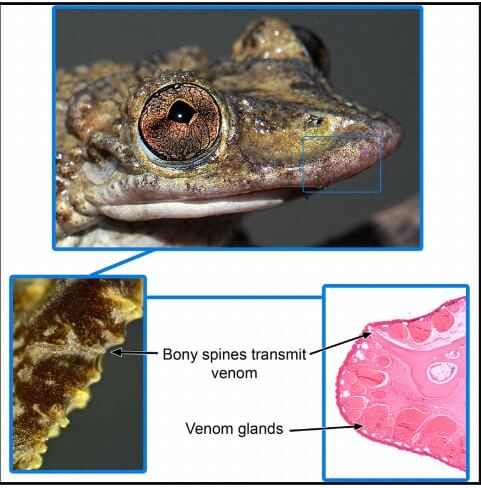Indeed, many species of poisonous frogs have been known for a long time, but the toxicity is passive and manifests itself only when another species tries to devour them. Unlike a poisonous animal, a venomous animal has a mechanism that allows it to inject its venom into another animal.

A sensational discovery by researchers at the University of Utah in the rainforests of Brazil, two species of poisonous frogs were found for the first time.
Indeed, many species of poisonous frogs have been known for a long time, but the toxicity is passive and manifests itself only when another species tries to devour them. Unlike a poisonous animal, a venomous animal has a mechanism that allows it to inject its venom into another animal.
These species of frogs have bony poison spines that stick out of their heads, and with which they can deliver the deadly poison to the victim. Of the two, the more venomous is Aparasphenodon brunoi (pictured). According to calculations, one gram of its venom can kill 300,000 mice or 80 people. The rest of the arm (or rather the head) of the other species called Corythomantis greeningi was well felt by Carlos Jared, the main researcher of the study, Carlos Jared suffered severe pain for about five hours as a result of a work accident with a poisonous thorn that penetrated his skin.
